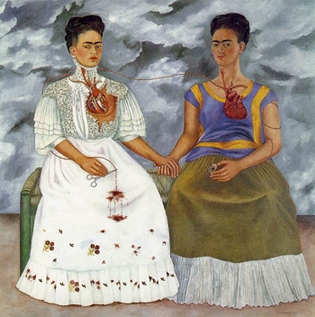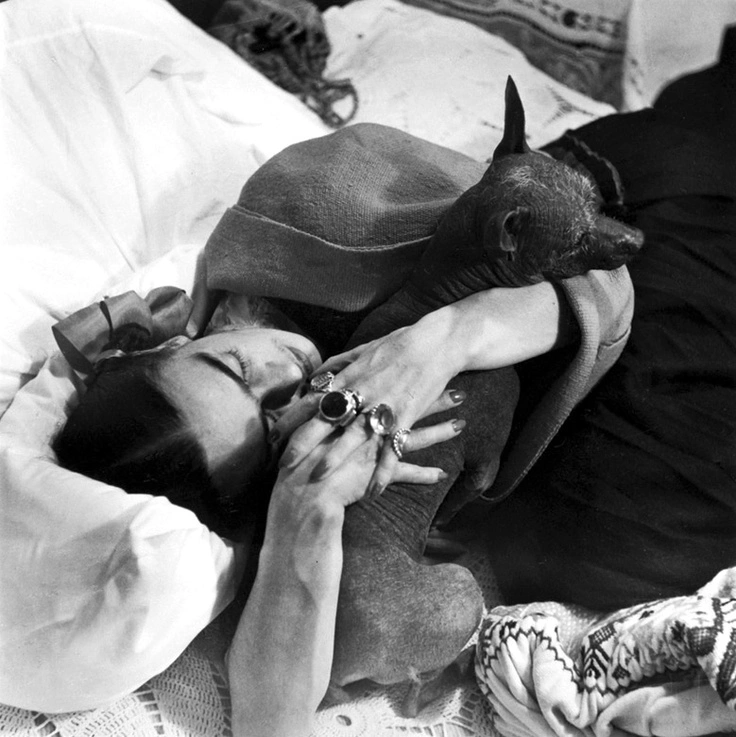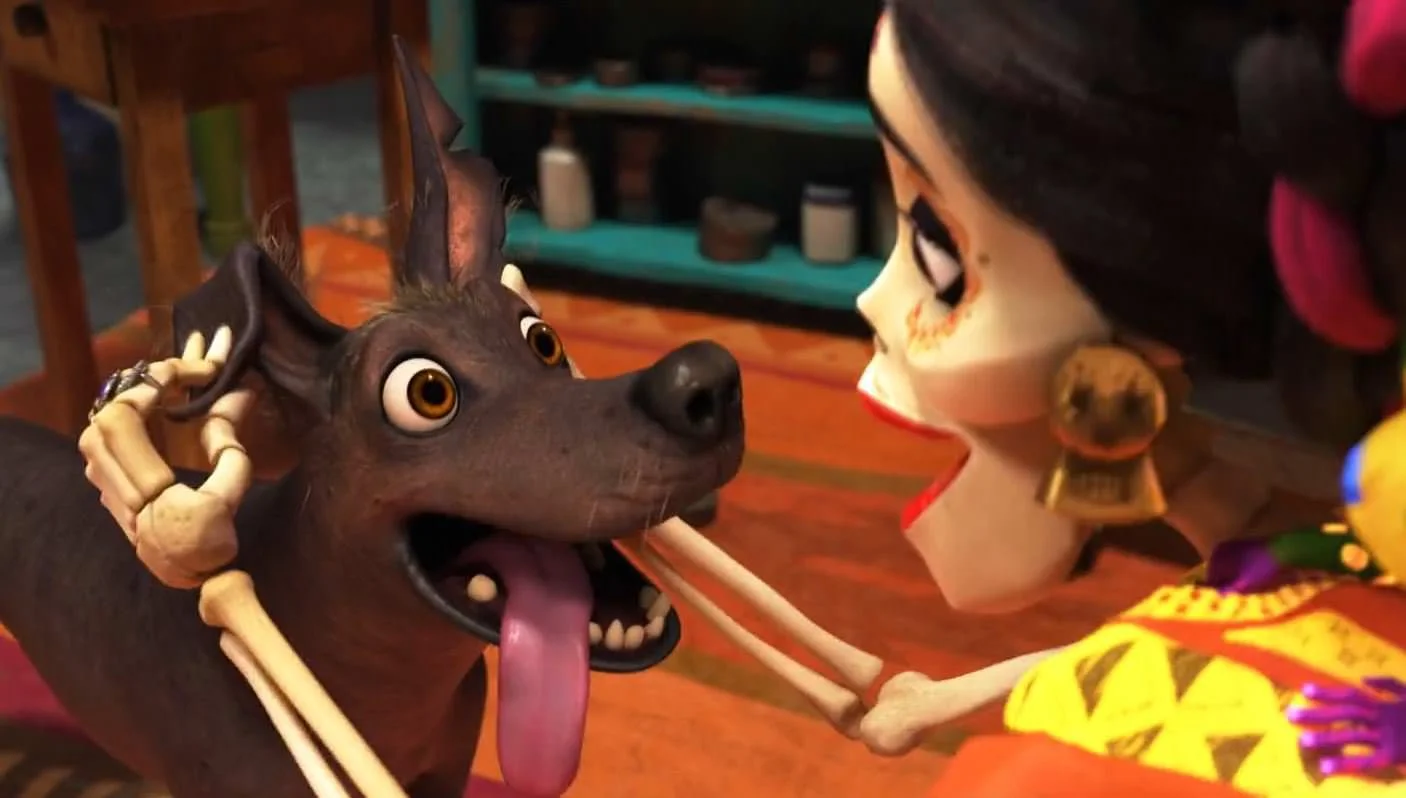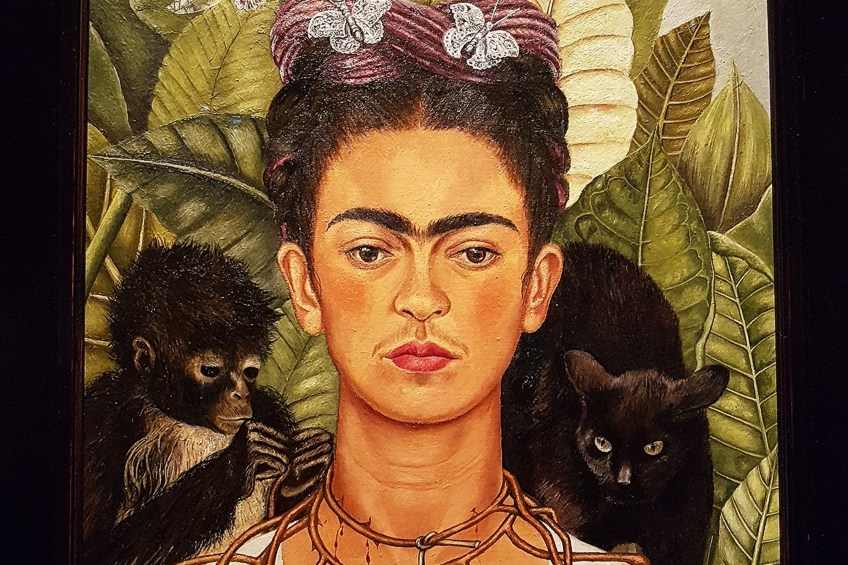Frida Kahlo
The iconic life and art of a trailblazing artist
Frida Kahlo, the renowned Mexican artist, continues to captivate art enthusiasts worldwide with her vivid and introspective works. Her unique style, characterized by vibrant colors and powerful symbolism, has made her an icon of the art world. Beyond her artistic talents, Frida Kahlo led a fascinating life, marked by personal struggles, resilience, and a deep connection to Mexican culture. One aspect of her life that often goes unnoticed is her profound love for Xolo dogs, an ancient and revered breed in Mexican history.
The life and influences of Frida Kahlo
Frida Kahlo’s life was marked by significant events and personal challenges that shaped her as an artist. Born in 1907 in Coyoacán, Mexico, she experienced childhood polio, which left her with a lifelong limp. However, it was a tragic bus accident at the age of 18 that had a profound impact on her life. Sustaining severe injuries, including a broken spine, Kahlo spent months bedridden and used art as a means of escape and self-expression during her recovery.
Kahlo’s Mexican heritage and indigenous roots played a vital role in shaping her artistic style. She drew inspiration from Mexican folk art, imbuing her works with vibrant colors, symbolism, and a deep connection to her cultural identity. Additionally, her encounters with renowned artists like Diego Rivera, whom she later married, and her exposure to European art movements like Surrealism and Symbolism influenced her artistic development.
Exploring Frida Kahlo’s artistic language
Frida Kahlo’s self-portraits are at the heart of her artistic oeuvre. With unflinching honesty, she depicted her physical and emotional pain, often incorporating surreal and dreamlike elements into her works. Her art served as a therapeutic tool, allowing her to confront and come to terms with her inner demons. Kahlo’s paintings are characterized by meticulous attention to detail, intricate symbolism, and a compelling fusion of reality and imagination.
One of Kahlo’s most renowned paintings, “The Two Fridas,” is a poignant exploration of her duality and the emotional turmoil she experienced. Depicting two versions of herself, one in traditional Mexican attire and the other in a Victorian-style white dress, the painting reflects her conflicted sense of identity. Through her art, Kahlo fearlessly confronted themes of gender, sexuality, mortality, and societal expectations, challenging conventional norms and giving voice to marginalized perspectives.

Frida Kahlo’s enduring legacy
Frida Kahlo’s art and life continue to resonate with audiences worldwide, transcending time and cultural boundaries. Her unapologetic exploration of personal struggles and the human condition has made her an icon of resilience and authenticity. Kahlo’s impact extends beyond the art world, as she has become a symbol of empowerment for women, artists, and individuals facing adversity.
Her art has inspired numerous contemporary artists, and her distinctive visual style has influenced fashion, design, and popular culture. Kahlo’s iconic image, characterized by her signature unibrow, floral headdresses, and vibrant attire, has been emulated and celebrated globally. Exhibitions dedicated to her work draw crowds, and her paintings command high prices at auctions, further solidifying her status as a pioneering artist.
The Xoloitzcuintli: a symbol of Mexican heritage
The Xoloitzcuintli, commonly referred to as the Xolo, holds a special place in Mexican culture and history. This ancient breed has been present in Mexico for over 3,000 years and is considered sacred by the indigenous people. The Xolo dogs were believed to have healing abilities and were often used in rituals and ceremonies.
The Xoloitzcuintli comes in three sizes—toy, miniature, and standard—and can have either a hairless or coated coat. The hairless variety is the most iconic, with its smooth, warm skin and elegant appearance. It is this variety that Frida Kahlo adored and welcomed into her life.
Frida Kahlo’s affinity for Xolo dogs stemmed from her deep connection to Mexican culture and her appreciation for the breed’s historical significance. She saw the Xolos not only as loyal companions but also as symbols of Mexican identity and resilience. Her love for these dogs is evident in many of her paintings, where Xolos are often depicted alongside her, emphasizing their importance in her life.
Today, Xoloitzcuintli breeders and enthusiasts celebrate Frida Kahlo’s connection to the breed, recognizing her as a champion of Mexican heritage and culture. The Xoloitzcuintli has gained recognition and popularity in part due to Frida Kahlo’s affection for the breed. The unique combination of Frida’s artistry and her love for Xolo dogs has created a lasting impression on the art world and the dog-loving community alike.

In recent years, Xoloitzcuintli breeders have experienced an increased demand for these dogs, thanks to Frida Kahlo’s influence. People are drawn to the breed not only for its elegant and striking appearance but also for its historical and cultural significance. By embracing Xolos, dog enthusiasts are connecting with Mexican traditions and honoring the legacy of Frida Kahlo.
Furthermore, Frida’s bond with her Xolo dogs demonstrates the profound impact that animals can have on our lives. The companionship and unconditional love provided by these dogs were sources of comfort and solace for Frida amidst her physical and emotional struggles. In turn, Frida’s affinity for the Xoloitzcuintli serves as a reminder of the deep bond that can exist between humans and animals, transcending language, culture, and art.
Frida Kahlo, a visionary artist and an embodiment of resilience, left an indelible mark on the art world and Mexican culture. Her vibrant self-portraits and exploration of personal pain continue to inspire and resonate with audiences globally. However, her love for Xolo dogs is an aspect of her life that often goes overlooked.
The Xoloitzcuintli, with its ancient lineage and spiritual significance in Mexican history, held a special place in Frida’s heart. Through her art, Frida depicted the Xolos as not only her loyal companions but also as symbols of Mexican identity and strength. Her paintings immortalize the bond she shared with these dogs, further amplifying their importance in her life and the Mexican cultural narrative.
Frida Kahlo’s legacy, encompassing both her art and her connection to Xolo dogs, serves as a testament to the power of self-expression, cultural pride, and the profound relationship between humans and animals. By appreciating and acknowledging Frida’s love for Xolos, we honor her memory and continue to celebrate her as a trailblazing artist, feminist icon, and lover of Mexican heritage.
So, the next time you marvel at Frida Kahlo’s bold brushstrokes or immerse yourself in the rich symbolism of her artwork, remember to also recognize the presence of the Xoloitzcuintli—a loyal and cherished companion that played an essential role in Frida’s life and artistic journey.
Xolo immortalized in “Coco”
In “Coco,” the animators beautifully intertwine the characters of Frida Kahlo and Dante the Xolo dog to create a touching and meaningful connection. As a skeleton, Frida symbolizes her immortal spirit, her indomitable passion for art, and her ability to transcend physical boundaries. By choosing Dante, a Xoloitzcuintli, as her beloved companion, the filmmakers honor Frida’s deep love for animals, particularly her affinity for the Xolo breed.
Throughout the film, Frida’s skeleton affectionately caresses Dante, underscoring the bond between them. This poignant gesture encapsulates Frida’s connection not only to the dog but also to her cultural roots and artistic expression. Through this portrayal, “Coco” portrays Frida as a guiding force, a beacon of inspiration, and a reminder that love and passion endure beyond life’s constraints.

Frida Kahlo’s legacy continues to be celebrated through retrospectives, exhibitions, and educational initiatives. Museums worldwide, including the Frida Kahlo Museum (also known as the Blue House) in Mexico City, showcase her work, offering visitors a deeper understanding of her life and art. Scholars and art enthusiasts analyze her paintings, writings, and personal diary, providing valuable insights into her creative process and shedding light on the complexities of her persona.
Moreover, Frida Kahlo’s influence extends to social and political realms. Her art challenged patriarchal norms and advocated for women’s rights and equality. She defied societal expectations, using her platform to address issues of gender inequality, identity, and cultural imperialism. Kahlo’s art was a form of resistance, highlighting the strength and resilience of marginalized communities. Her ability to confront her own pain and transform it into powerful art serves as an inspiration for individuals navigating their own challenges.
In recognition of her significant contributions, Frida Kahlo has been posthumously awarded numerous accolades. In 2002, she became the first Mexican artist to have an exhibition at the Louvre Museum in Paris. Her work has also been featured in major retrospectives at renowned institutions such as the Tate Modern in London and the Museum of Modern Art in New York City. Additionally, Kahlo’s image has been immortalized in popular culture through movies, documentaries, and literature, further solidifying her status as an enduring icon.
The impact of Frida Kahlo’s art and legacy goes beyond the confines of the art world. Her ability to merge personal experiences with universal themes resonates with audiences from diverse backgrounds. Her portrayal of pain, love, and self-discovery evokes empathy and introspection, encouraging viewers to reflect on their own emotions and confront their vulnerabilities.
Frida Kahlo’s life and art are a testament to the power of self-expression and resilience. Through her unique visual language, she shared her pain, hopes, and dreams with the world, leaving an indelible mark on the art world and beyond. Her unwavering spirit continues to inspire artists, activists, and individuals seeking to navigate the complexities of their own lives. Frida Kahlo’s legacy serves as a reminder that art has the power to heal, empower, and challenge societal norms, transcending time and inspiring generations to come.

